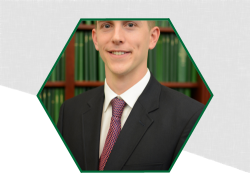This work presents a high-fidelity model of the laser-material interaction during metal additive manufacturing (AM) for accurate prediction of the molten pool morphology and temperature field without needing any calibration of parameters by experiments. The model is based in an OpenFOAM compressible Volume-of-Fluid (VOF) solver that is modified to include the effects of solidification and melting, thermocapillary flow, keyhole development, vaporization at the liquid-gas interface, and ray tracing for multiple reflections of the laser beam in the keyhole. The novelty of this work is the attempt to realistically capture the development of the vapor plume and laser-plume interaction while accounting for all relevant physical mechanisms during AM. During the metal AM process, some material is vaporized by the high-intensity laser and ejected into the gas to create a vapor plume. Absorption of the laser into the vapor plume reduces the energy that reaches the substrate and is tracked by the ray tracing algorithm. The resultant local heating of the metallic vapor forms weakly ionized plasma which modifies the optical properties of the vapor plume and further influences the laser attenuation. The predicted molten pool sizes and morphologies provide satisfactory agreement with the experiments across a broad range of operating conditions from the conduction to the keyhole mode. Self-consistent calculation of the attenuation is shown to be essential for model accuracy in the high-power cases where laser-plume interaction becomes a dominant effect.
Keywords
- Additive Manufacturing
- Attenuation
- High Fidelity Physics-Based Model
- Molten Pool Dynamics
- Process Modeling

